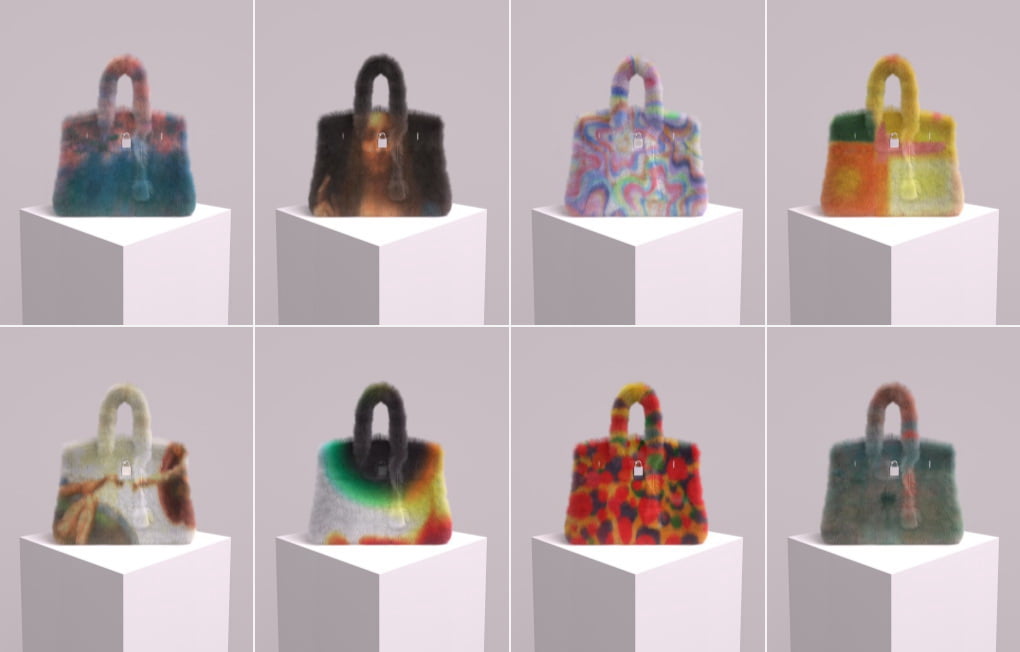Metaverse development is still in its infancy, but great things are expected from it in the coming years. With this in mind, many high-profile brands have begun filing trademarks in the Metaverse. Overall, it is safe to say that most companies should be looking into how they can initiate filings with the United States Patent and Trademark Office (USPTO).
Companies ahead of the game regarding trademark applications, include those within the payment industry, American Express, Visa, and Paypal.
Another sector quick to see the potential of a future virtual world is fashion brands. Brands including Nike, Adidas, and Gucci all make considerable profits from metaverse branding and virtual goods.
Even fast-food giant Mcdonald’s has filed metaverse trademarks for virtual goods and services.
These brands want to protect their brand from trademark infringement in the Metaverse and to benefit from the financial opportunities it affords, through the sale of virtual goods, products, and services. You should, also.
Other businesses have been slow off the mark and have seen others profit from their products. One such example is Hermes, who have recently filed trademark applications to protect their trademarks after initiating court proceedings against Mason Rothschild, the owner of Metabirkin bags NFT collection, for allegedly profiting from their name. The NFT collection was hugely successful for the artist, but Hermes was less than impressed and publicly decried the NFTs.

What is a metaverse trademark?
Metaverse trademark applications are filings that afford your brand legal trademark protection in the Web3 sector.
The filing can be a single word, logo, phrase, or catchy design. It indicates the origin of the virtual goods and services of the brand owners and separates them from other entities’ business products.
Metaverse registration allows the brand to set up retail store services featuring virtual goods or services for use in the Metaverse and virtual worlds.
The process can take up to twelve months to complete, so the sooner the business starts the trademark application process, the better.
Where to make metaverse trademark applications?
Like traditional trademarks, brand owners need to go to the United States Patent and Trademark Office to make their filings. The USPTO trademark applications are not too daunting, and the website has many videos that help make the process easier.
The steps involved in making a metaverse trademark application with the USPTO include
- using a professional trademark registration search to verify whether or not the trademark has already been filed.
- preparation of trademark applications
- steering the filing through the USPTO examination process
- using the trademarks correctly, with digital goods and services
Once the steps are completed, the company has trademark protection in the Metaverse.
Existing trademark rights do not cover the Metaverse
Even if a business has already trademarked its goods and services, they need to make separate metaverse applications. This is because existing trademarks are probably only related to real-world physical goods and services. They do not include legal protection for infringement related to digital and virtual products and services featuring virtual goods such as NFTs.
What are brand owners trademarking in the Metaverse?
The Metaverse is a series of virtual worlds that will, at some stage in the future, become the Web3 equivalent of the internet. Already, many virtual environments exist, each containing separate virtual worlds, where real-world and virtual products and services, can be bought via virtual stores.
Trademark registrations in the Metaverse come under different trademark classes and depending on what classes a business trademarks, could have a huge effect on its ability to protect its brand. The classes we have seen companies file include,
Class 9
This class of trademark covers downloadable virtual goods, namely, images and multi-media files containing artwork and video, that use non-fungible tokens (NFTs) for authenticating ownership.
Class 35
Includes online virtual clothing stores and marketplaces for virtual fashion and accessories. Plus, entertainment and services for traders in digital assets such as NFTs.
Class 36
The classification relates to virtual financial services around cryptocurrencies and NFTs. It includes the creation, issuing, allocation, trading, lending and storage of NFTs, digital assets, utility tokens and cryptocurrencies.
Class 38
Comprises communication services for audio, video and digital media and social media content, including online broadcasting, streaming, chatrooms for users, and screening virtual and augmented reality content.
Class 41
This class of trademark application concerns online non-downloadable virtual goods, including clothing and accessories for use in virtual reality environments and digital collections that use NFTs and blockchain.
Class 42
Allows for the construction of online retail shops that permit users to forge their digital collectibles and NFT stores. The class further allows the registration of websites containing technology to aid users create and share data.
As the metaverse and related tech advance, standardization for goods and services will become apparent. However, for the present, these classifications will be enough for companies to begin realizing the benefits of a presence in the Metaverse.

What are the benefits of trademarking brands in the metaverse?
Although only a budding technology, the Metaverse has gotten a lot of businesses all worked up about the new growing business opportunities within the virtual space.
Gartner, an S&P 500 company with over 40 years of experience providing advice to top-notch companies, predicts that by 2026 some 25% of people will be active within the evolving metaverses for at least one hour a day. Users will involve themselves in activities, including education, games and entertainment services, work, shopping and socializing.
Speaking on the subject, Gartner VP Analyst Marty Resnick stated,
“Emerging metaverse technologies may be nascent, but they offer strategic opportunities — with potential benefits that are not limited to virtual worlds. Metaverse will transform the physical world, as well as transport or extend physical activities to a virtual world,”
This gives the company the potential to expand its services from the real world to the metaverse. A company’s trademark in the Metaverse opens further opportunities to an audience of Gen Z and Millenials who like to build communities around brands and projects they are active in.
Further benefits include real-time immersive interactions and entry to virtual economies where cryptocurrencies and blockchain are used.
Afterthoughts
With people expected to spend more time in immersive experiences over the coming years, companies need to get a new trademark in the metaverse for each classification of services they wish to offer in the emerging virtual world.
Companies that properly prepare metaverse trademarks, should be well placed, to take advantage of the opportunities the Metaverse presents.
You can also check out our article on eCommerce in the metaverse.
Author

NFT enthusiast who delves into the intricacies of digital ownership with a discerning eye.




